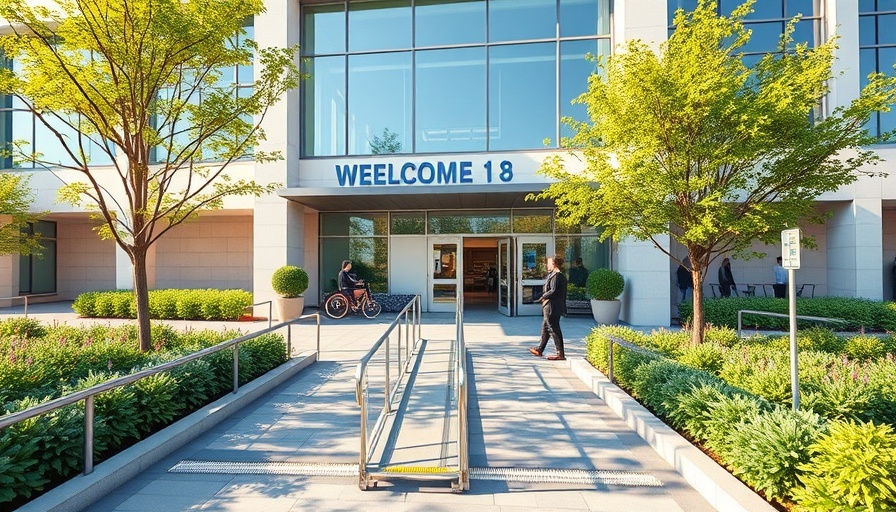
Why Wheelchair-Accessible Bathrooms Are Essential for All
In New Jersey, ensuring a barrier-free environment is an essential step toward fostering inclusivity and offering equal access to individuals living with disabilities. One of the most critical aspects of this mission is providing wheelchair-accessible bathrooms. These restrooms are not just about compliance with laws; they represent a moral and ethical responsibility to ensure everyone, regardless of mobility challenges, can navigate public spaces with dignity. For older adults, caretakers, and those with temporary disabilities, accessible facilities are not luxuries—they are necessities that drastically improve their quality of life.
Creating Spaces That Welcome Everyone
A wheelchair-accessible bathroom is a fundamental aspect of any public or private facility committed to promoting equity and independence. These facilities are designed with key features that cater to diverse needs. Spacious layouts enable easy navigation, while the installation of grab bars and accessible toilets enhances safety. Imagine a scenario where a disabled parent finds a suitable restroom for their toddler in a public venue. Without accessible bathrooms, it becomes an uphill battle fraught with stress and anxiety, effectively deterring participation in community events and fostering feelings of exclusion.
Understanding the Legal Framework: Compliance and Beyond
The importance of wheelchair-accessible bathrooms extends beyond personal choice; they are mandated by law. The Americans with Disabilities Act (ADA) serves as the foundation for access standards, requiring businesses and public facilities to adhere to specific guidelines for restroom design. In New Jersey, further regulations from the New Jersey Division of Disability Services call for even greater access in state-run facilities.
Compliance with these guidelines is non-negotiable. While understanding these regulations is critical, businesses and public entities often lack awareness of the specific requirements, leading to inadequate facilities that contribute to exclusion rather than inclusion. Education and regular training on these legalities are indispensable to ensure that standards are consistently met.
Key Design Elements for Functional Accessibility
What makes a bathroom truly accessible? Featuring specific design elements is essential. Ample space is foundational, with a recommended minimum turning radius of 60 inches, allowing wheelchair users to maneuver freely and comfortably. Additionally, fixtures should be positioned within easy reach, with heights suitable for wheelchair users. For instance, sinks, soap dispensers, and hand dryers should not exceed 34 inches from the ground.
Grab bars are another integral element; they provide much-needed support and stability as individuals navigate the space. Design emphasis should also cover non-slip flooring to enhance safety, giving users the confidence they need when using these facilities.
Enhancing Community Inclusivity: A Collaborative Effort
Universal access is not just an issue for policy-makers; it involves collaboration among community members, business owners, and local authorities. By prioritizing the installation of accessible bathrooms, New Jersey communities can cultivate an inclusive atmosphere. This commitment signals to all individuals that they belong, fostering an environment rich in dignity and acceptance.
Encouraging a dialogue around accessibility—whether it's discussing potential upgrades or creating awareness campaigns—empowers community members and leaders to take action. Engaging stories of those who have benefited from these improvements can further illustrate the profound impact accessible facilities have.
Actionable Insights: Steps Toward Accessibility
Community stakeholders need to take actionable steps to enhance their facilities. Here are some suggestions: 1. Conduct a thorough accessibility audit of existing bathrooms to identify necessary upgrades, 2. Provide training sessions for staff about ADA standards and customer services for serving individuals with disabilities, and 3. Engage the community in discussions to identify additional needs and gaps in accessibility.
Real-life success stories highlight how communities can come together to transform environments into places where everyone feels welcome. Through collaboration and persistence, we can create a future where mobility does not hinder one's ability to experience life fully.
Conclusion: Together, We Can Make a Difference
As we reflect on the importance of wheelchair-accessible bathrooms, it is vital to recognize that they are instrumental in providing equality and enhancing quality of life for individuals with disabilities. Understanding the legal requirements, engaging community efforts, and implementing thoughtful design will ensure that New Jersey leads the way toward truly inclusive environments.
Let’s come together to advocate for universal access to facilities—because everyone deserves dignity and respect, regardless of their mobility challenges.
 Add Row
Add Row  Add
Add 




Write A Comment